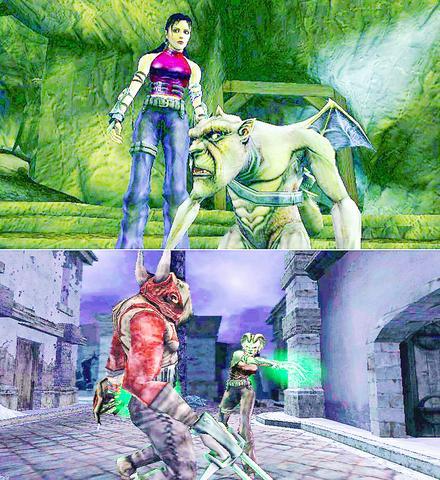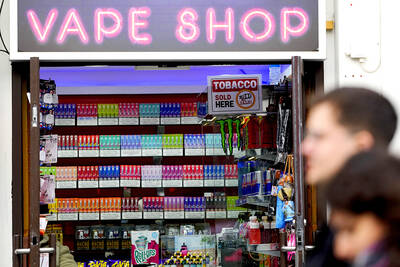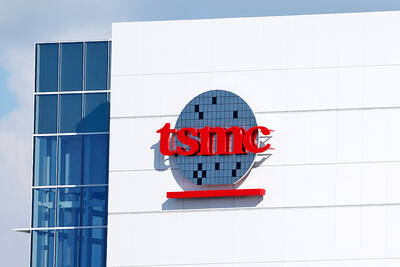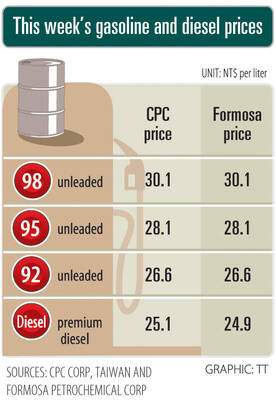Those looking for a slick state-of-the art game with gorgeous graphics and Hollywood-style cinematics would be advised to stay far away from Irem's action-adventure game Disaster Report. With indifferent graphics and acting, an increasingly ridiculous plot and the worst sound of any game in recent memory, Disaster Report is easy to overlook.
It's also the best game I've played this year.

PHOTO: NY TIMES
In Disaster Report, a journalist named Keith Helm travels to Capital City, a metropolis built on a man-made island. Arriving just as an earthquake hits, he tries to reach an evacuation point, a goal made more difficult by a series of aftershocks that continue to bring the city down around him.
It's difficult to know how to describe Disaster Report because nothing else quite like it exists. It has elements seen in other games -- inventory-based puzzles, exploration and action sequences (consisting mainly of running away from disaster) -- but the overall effect is unique. Some players have described it as a survival-horror game without the horror. Yet it is probably closest in game play to "Tomb Raider," although Keith does not carry a gun, discover treasures or wear skin-tight clothes.
Disaster Report effectively conveys the experience of exploring a ruined, collapsing city. Twisted girders precariously hold up broken highways, cracked streets are littered with deserted cars, and half-destroyed office buildings expose their insides to the elements. As the city continues to crumble around Keith, there are moments of high drama. When he begins to climb a ladder, the platform he has just vacated falls 30m below him; a highway gives way section by section as Keith runs just ahead.
The game's designers are so concerned with the details of Keith's situation that the game sometimes seems like a tutorial on how to survive a disaster.
Lesson 1 is to stay hydrated; water is an important element of the game, and Keith must drink fluids to guard his health. He can also protect himself from the elements by wearing hats and sunglasses he finds along the way.
The early part of the game has a wonderful simplicity, as an increasingly disheveled Keith crosses a partly collapsed bridge and saves Karen, a girl trapped on a subway car that is precariously balanced on a ledge. Characters have interesting, utterly human reactions to their situations: When Keith gives the girl a boost over some rubble in the hope she can find a way to haul him up, he stands there wondering if she will come back. While exploring, Keith can hear fragments of a mundane conversation between Karen and a photojournalist who needs help.
As the story progresses, simplicity is tossed aside as Keith discovers a conspiracy surrounding the earthquake, and mysterious men with guns try and kill him. This development results in several entertaining sequences as Keith tries to sneak past thugs and deals with a missile-equipped helicopter, but the story becomes a mess, with an absurd denouement. In terms of drama, the game would have been far more satisfying had it remained a simple story of survival.
Disaster Report is short, but there are a few places where the action branches off, so after playing the game through once I went back to a save point to play an alternative section.
There are seven different endings, including some in which traveling companions die or are deserted by Keith, who can lie to a rescue worker to save himself.
The graphics compare poorly with those of other games, with stiff character movement and a lack of the kind of lighting effects and texturing that make games like Splinter Cell and "Ico" so stunning. These flat graphics are somewhat counterbalanced by the scope and detail of the city and by those impressive moments when something huge falls into the street in a blast of dust and debris.
The game's engine has difficulty drawing complex scenes, though, and game play unfolds in slow motion when there is too much detail onscreen.
Disaster Report's weakest aspect is its sound effects. A character walking on concrete makes the sound of a pencil tapping a tabletop, and footsteps on a lawn sound like gravel in a cement mixer. At times one has to stop and puzzle out a sound. Is that a car alarm? Is that ragged sound supposed to be wind? Sometimes I couldn't figure it out.
At the other end of the spectrum is Primal, developed by Sony Computer Entertainment. Primal is everything Disaster Report is not: slick, professional, good-looking, well-acted. And boring.
Primal is the story of Jen, who lands in the hospital after she and her rock singer boyfriend are attacked by a huge monster. Soon a gargoyle named Scree takes Jen to a demonic realm where she learns to transform herself into various demon shapes to fight for her boyfriend's life. The player can control both Scree, who can climb walls and bring statues to life, and Jen, who can fight and use her various demonic abilities.
Primal sounds fun, but the experience is disappointing. Much of the game involves wandering around trying to figure out where to go next, a task made only slightly easier by Scree's advice and the game's rather sketchy map. When you stumble upon some antagonists, a fight ensues, but such conflicts involve little more than pushing a couple of buttons and running around a bit. It hardly even matters which button you push. Your foes don't seem very bright, and rather than ganging up on you they will often politely wait their turn to attack.
Primal is such a slickly made game that I had trouble giving up on it. I played it for hours, feeling bored, and then a few days later sat down and played it some more. I kept thinking it would get better: How could such a stylishly designed game not be fun? I still can't help but wonder whether the game improves later on -- if one of the demon forms I have not yet achieved is more fun to fight with, for example, or if other demonic realms are better designed. But I've already sunk about 15 hours into the game, during which I experienced about 45 minutes of fun.
Although I played Disaster Report for only about 12 hours, I got 12 hours of tremendous fun out of it. With the backing of Sony and a heavy advertising budget, it seems likely that Primal will outsell the relatively obscure Disaster Report, and that's a shame.
Disaster Report, whose game play belies its imperfect appearance, is like an unexpected gift, whereas Primal is like a gorgeously wrapped present that when opened turns out to have nothing inside.

Real estate agent and property developer JSL Construction & Development Co (愛山林) led the average compensation rankings among companies listed on the Taiwan Stock Exchange (TWSE) last year, while contract chipmaker Taiwan Semiconductor Manufacturing Co (TSMC, 台積電) finished 14th. JSL Construction paid its employees total average compensation of NT$4.78 million (US$159,701), down 13.5 percent from a year earlier, but still ahead of the most profitable listed tech giants, including TSMC, TWSE data showed. Last year, the average compensation (which includes salary, overtime, bonuses and allowances) paid by TSMC rose 21.6 percent to reach about NT$3.33 million, lifting its ranking by 10 notches

Popular vape brands such as Geek Bar might get more expensive in the US — if you can find them at all. Shipments of vapes from China to the US ground to a near halt last month from a year ago, official data showed, hit by US President Donald Trump’s tariffs and a crackdown on unauthorized e-cigarettes in the world’s biggest market for smoking alternatives. That includes Geek Bar, a brand of flavored vapes that is not authorized to sell in the US, but which had been widely available due to porous import controls. One retailer, who asked not to be named, because

SEASONAL WEAKNESS: The combined revenue of the top 10 foundries fell 5.4%, but rush orders and China’s subsidies partially offset slowing demand Taiwan Semiconductor Manufacturing Co (TSMC, 台積電) further solidified its dominance in the global wafer foundry business in the first quarter of this year, remaining far ahead of its closest rival, Samsung Electronics Co, TrendForce Corp (集邦科技) said yesterday. TSMC posted US$25.52 billion in sales in the January-to-March period, down 5 percent from the previous quarter, but its market share rose from 67.1 percent the previous quarter to 67.6 percent, TrendForce said in a report. While smartphone-related wafer shipments declined in the first quarter due to seasonal factors, solid demand for artificial intelligence (AI) and high-performance computing (HPC) devices and urgent TV-related orders

Prices of gasoline and diesel products at domestic fuel stations are this week to rise NT$0.2 and NT$0.3 per liter respectively, after international crude oil prices increased last week, CPC Corp, Taiwan (台灣中油) and Formosa Petrochemical Corp (台塑石化) said yesterday. International crude oil prices last week snapped a two-week losing streak as the geopolitical situation between Russia and Ukraine turned increasingly tense, CPC said in a statement. News that some oil production facilities in Alberta, Canada, were shut down due to wildfires and that US-Iran nuclear talks made no progress also helped push oil prices to a significant weekly gain, Formosa said